![]()
Many years ago, I read Christina Lamb’s famous but controversial book titled Waiting for Allah: Pakistan’s Struggle for Democracy. Although her book, touched upon various facets of the Pakistani society, it focused on the role of religion. She made two key arguments. First that Pakistan was trapped by the need to adhere to a “true” version of Islam, which impeded its progress.
She wrote, “The more the country strives for what its religious scholars see as true Islam, the less equipped it becomes for running a twentieth-century state, and the more it is forced to watch once-lagging competitors such as South Korea, Thailand and Malaysia steam ahead.”
Her second core argument was that instead of taking charge of the situation and taking the necessary steps at the time they are needed, Pakistani rulers and institutions, have the tendency to leave it to God and miracles. In fact the book ends with the sentence, “Pakistan is still waiting for Allah”.
The book was written back in 1991 but I think the two arguments mentioned above are still extremely relevant. Right now Pakistan, just like the rest of the world, is grappling with the rampant spread of the coronavirus. As a country, it needs to take some very tough but time sensitive decisions about a nationwide lockdown that may have lasting economical impacts. But if
Italy is seen as an example, the consequences of delaying a lockdown are far more horrific.
But Pakistan's government seems to be waiting for some miracle as they hesitate to do the necessary. Prime Minister Imran Khan ruled out a nationwide lockdown during his speech, citing economic reasons and expressed hope that the Pakistan's weather will combat the spread of the coronavirus. Instead of being proactive, he has so far told people to practice care for the next month and a half while hoping that a theory about the weather, with no conclusive evidence to falsify, will save the country from this pandemic. Right now it seems like we are relying on
prayers and hope is the official strategy. Finally, due to pressure from all sides, including the powerful establishment, the government has finally announced a
lock down in Punjab though it remains to be seen how effectively it will implement it.
The government’s lacklustre response is compounded by our society’s attitude towards religious rituals. For example, right now, it is of paramount importance that public gatherings, including those of religious nature, are avoided. This would imply offering all prayers, including the Friday congregational prayers, at home instead of mosques. But for a lot of people this is unacceptable and as I write these sentences, a raging debate has ensued over whether or not it is permissible in Islam to pray Friday prayers at home. Some
hardline clerics have taken the extreme stance that male Muslims, unless ill, should go to the mosque to fulfil his religious duties despite the threat from the current pandemic. It is perhaps due to this reason that despite the very real threat of the coronavirus and appeals from the government,
many continue to offer Jumma (Friday) prayers at mosques all across Pakistan.
Evidence from Malaysia and also from
Tablighi Ijtema in Raiwind, Pakistan shows that large gatherings of people may serve as mass infection grounds, necessitating an official ban. There is undoubtedly a great deal of public pressure on the government, which is perhaps why the prayers are still being allowed. This move is a serious mistake in my opinion.
The most surprising part is that many Muslim countries including Saudi Arabia and Iran, have banned all sort of public gatherings, including those that are religious. Saudi Arabia has temporarily
banned everyone, including its own residents, from performing pilgrimage around the Holy Kaabah. Iran has closed several shrines in order to mitigate the spread of the virus and its police even
used force to disperse crowds when they tried to force their way into two popular shrines. Other Muslim countries have also imposed similar restrictions on public gatherings. Yet, many are still
gathering outside mosques in Karachi to pray, where a complete lockdown has been announced.
For some odd reason, we as a society think we are the ultimate custodians of faith and that our mosques and religious public gatherings are
more important than mosques in other countries and the Umrah itself. Whereas the actual custodians of holy Islamic places, such as Iran and Saudi Arabia, are taking all possible precautionary measures and putting human lives above everything else.
But then this has always been an issue with our society. We are more prone to religious violence, our blasphemy laws are
harsher, and treatment of women
worse than many other Muslim countries. For some reason, we insist on being more religious without understanding the true meaning and essence of our religion. Islam gives sanctity of human life the utmost importance and yet we constantly overlook it for religious exhibitionism.
Right now, we need to act rational, which frankly is completely in line with our faith, to defeat this virus. We should pray at home and not indulge in false public display of religiosity. The federal government should also take a lead and temporarily ban religious public gatherings along with all other public gatherings, as we have a very limited window of time.
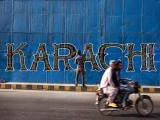









 Gif: Giphy[/caption]
Directed by the woman who directed Bend It Like Beckham, this movie might be her magnum opus. The Kohinoor in her crown of a career. It’s the most accessible movie by Gurinder Chadha, and solidifies her name in the long list of storytellers and filmmakers around her. It touches on so many things so subtly that it’s hard to characterise this move into a specific genre.
Is it a coming of age movie? Yes.
Is it a musical? Well, kind of.
Is it a period piece? Most definitely.
Like the man whose music this movie is inspired by, Blinded by the Light is versatile and wholesome in all the right ways. It’s the story of my very Karachi-influenced family as much as it is of a Jersey family in the 70s or an immigrant family in Luton, England. It’s powerful and melodic and so efficiently told that not a second of this movie seems drawn out or boring. It’s the perfect example of 'pait bhi bhar gaya aur niyyat bhi bhar gayi' (stomach and intention, both have been filled).
[caption id="" align="alignnone" width="480"]
Gif: Giphy[/caption]
Directed by the woman who directed Bend It Like Beckham, this movie might be her magnum opus. The Kohinoor in her crown of a career. It’s the most accessible movie by Gurinder Chadha, and solidifies her name in the long list of storytellers and filmmakers around her. It touches on so many things so subtly that it’s hard to characterise this move into a specific genre.
Is it a coming of age movie? Yes.
Is it a musical? Well, kind of.
Is it a period piece? Most definitely.
Like the man whose music this movie is inspired by, Blinded by the Light is versatile and wholesome in all the right ways. It’s the story of my very Karachi-influenced family as much as it is of a Jersey family in the 70s or an immigrant family in Luton, England. It’s powerful and melodic and so efficiently told that not a second of this movie seems drawn out or boring. It’s the perfect example of 'pait bhi bhar gaya aur niyyat bhi bhar gayi' (stomach and intention, both have been filled).
[caption id="" align="alignnone" width="480"] Gif: Giphy[/caption]
The story revolves around Javed, a Pakistani immigrant boy who has dreams of becoming a writer. He lives with his parents and sister and secretly lives a double life of a Springsteen fan and a Pakistani immigrant boy trying to make it. The dynamic between him and his father is what the core of this movie is about. His father is not the villain and that’s the best part. I got what his father was saying, I knew exactly what he meant. But I also got Javed. That is the beauty of this movie. There isn’t a wrong person in this movie (except for the white supremacists, they’re usually wrong), just hard circumstances.
[caption id="" align="alignnone" width="480"]
Gif: Giphy[/caption]
The story revolves around Javed, a Pakistani immigrant boy who has dreams of becoming a writer. He lives with his parents and sister and secretly lives a double life of a Springsteen fan and a Pakistani immigrant boy trying to make it. The dynamic between him and his father is what the core of this movie is about. His father is not the villain and that’s the best part. I got what his father was saying, I knew exactly what he meant. But I also got Javed. That is the beauty of this movie. There isn’t a wrong person in this movie (except for the white supremacists, they’re usually wrong), just hard circumstances.
[caption id="" align="alignnone" width="480"] Gif: Giphy[/caption]
Sprinkled with beautiful little performances by a mainly unknown cast, Blinded by the Light is as impactful as any coming of age story should be. There are some recognisable faces, Hayley Atwell from
Gif: Giphy[/caption]
Sprinkled with beautiful little performances by a mainly unknown cast, Blinded by the Light is as impactful as any coming of age story should be. There are some recognisable faces, Hayley Atwell from 
 Gif: Giphy[/caption]
If Blinded by the Light is playing in a theatre near you, I urge you to drop everything and watch it. If you dislike it, I will personally not give a dime because you’re wrong and need to re-evaluate your life’s choices. But if you watch it, shed a tear and feel the bubbling under your chest and the movement somewhere deep in your soul, let me know. We should grab coffee together sometime.
Gif: Giphy[/caption]
If Blinded by the Light is playing in a theatre near you, I urge you to drop everything and watch it. If you dislike it, I will personally not give a dime because you’re wrong and need to re-evaluate your life’s choices. But if you watch it, shed a tear and feel the bubbling under your chest and the movement somewhere deep in your soul, let me know. We should grab coffee together sometime.
 (The film is not scheduled to be released in Pakistani cinemas)
(The film is not scheduled to be released in Pakistani cinemas)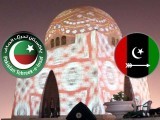



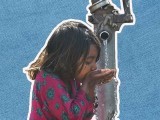

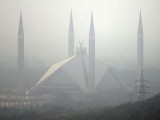
 Photo: Air Now[/caption]
Last week, three teenagers filed a suit with the Lahore High Court asking for the classification of the Air Quality Index used by Punjab’s Environment Protection Agency to be reviewed. It’s their argument that the classification under-reports the severity of the air pollution. They want to challenge the Smog Policy approved in October 2017 as it sets these classifications.
Right now accurate data is also a problem in Lahore as the Punjab government only has three high quality air monitoring devices functioning in Lahore. Aslam has
Photo: Air Now[/caption]
Last week, three teenagers filed a suit with the Lahore High Court asking for the classification of the Air Quality Index used by Punjab’s Environment Protection Agency to be reviewed. It’s their argument that the classification under-reports the severity of the air pollution. They want to challenge the Smog Policy approved in October 2017 as it sets these classifications.
Right now accurate data is also a problem in Lahore as the Punjab government only has three high quality air monitoring devices functioning in Lahore. Aslam has 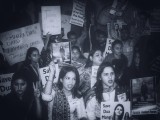




 Coach Qambrani has been associated with boxing for about 50 years now. He started his career as a boxer but had to give it up after a few years due to some health issues. However, his love for the sport did not diminish and he instead decided to channel his energy towards coaching a new generation of boxers in Pakistan. He proved himself to be an excellent coach and his proteges have included, Olympian Rasheed Qambrani and South Asian Games gold-medalist Abdul Majeed Qambrani, among other notable boxers. Today, coach Qambrani devotes his time towards grooming a new batch of boxers at the Pak Shaheen Boxing Club.
Coach Qambrani has been associated with boxing for about 50 years now. He started his career as a boxer but had to give it up after a few years due to some health issues. However, his love for the sport did not diminish and he instead decided to channel his energy towards coaching a new generation of boxers in Pakistan. He proved himself to be an excellent coach and his proteges have included, Olympian Rasheed Qambrani and South Asian Games gold-medalist Abdul Majeed Qambrani, among other notable boxers. Today, coach Qambrani devotes his time towards grooming a new batch of boxers at the Pak Shaheen Boxing Club.


 Founded in 1992, the Pak Shaheen Boxing Club has since produced a bevy of boxers, some of whom have made it on to the international boxing scene. In 2012, the club got a new building, courtesy of the Government of Sindh. The new building enabled coach Qambrani to pursue another dream that he had had – to coach girls in the typically male-dominated art of pugilism. Surprisingly, quite a few girls from his neighbourhood showed an interest in training, including girls from his own family. Since then, there has been a regular ebb and flow of girls wanting to participate, with a few who have been training regularly for the past five-six years. They have also been competing at the district and provincial levels, winning several laurels in the process.
Founded in 1992, the Pak Shaheen Boxing Club has since produced a bevy of boxers, some of whom have made it on to the international boxing scene. In 2012, the club got a new building, courtesy of the Government of Sindh. The new building enabled coach Qambrani to pursue another dream that he had had – to coach girls in the typically male-dominated art of pugilism. Surprisingly, quite a few girls from his neighbourhood showed an interest in training, including girls from his own family. Since then, there has been a regular ebb and flow of girls wanting to participate, with a few who have been training regularly for the past five-six years. They have also been competing at the district and provincial levels, winning several laurels in the process.


 Areesha has been boxing for five years.[/caption]
[caption id="attachment_94348" align="alignnone" width="600"]
Areesha has been boxing for five years.[/caption]
[caption id="attachment_94348" align="alignnone" width="600"] Azmeena is already ranked 106th in the world.[/caption]
On one hand, coach Qambrani is very proud of his trainees who have been proving themselves despite various constraints. On the other, he bemoans the lack of government support available to help further improve the facilities. He believes that there is no dearth of talent among the youth of his area, both boys and girls; however, most of them come from families of limited means and receive no official support either. As a result of these conditions, they often become disillusioned and give up the sport to pursue more practical means of income. It is imperative that better facilities and funding is made available for coach Qambrani since many of his trainees have the potential to perform and represent Pakistan at the international level.
(All photos courtesy of Jamil Akhtar)
Azmeena is already ranked 106th in the world.[/caption]
On one hand, coach Qambrani is very proud of his trainees who have been proving themselves despite various constraints. On the other, he bemoans the lack of government support available to help further improve the facilities. He believes that there is no dearth of talent among the youth of his area, both boys and girls; however, most of them come from families of limited means and receive no official support either. As a result of these conditions, they often become disillusioned and give up the sport to pursue more practical means of income. It is imperative that better facilities and funding is made available for coach Qambrani since many of his trainees have the potential to perform and represent Pakistan at the international level.
(All photos courtesy of Jamil Akhtar)









